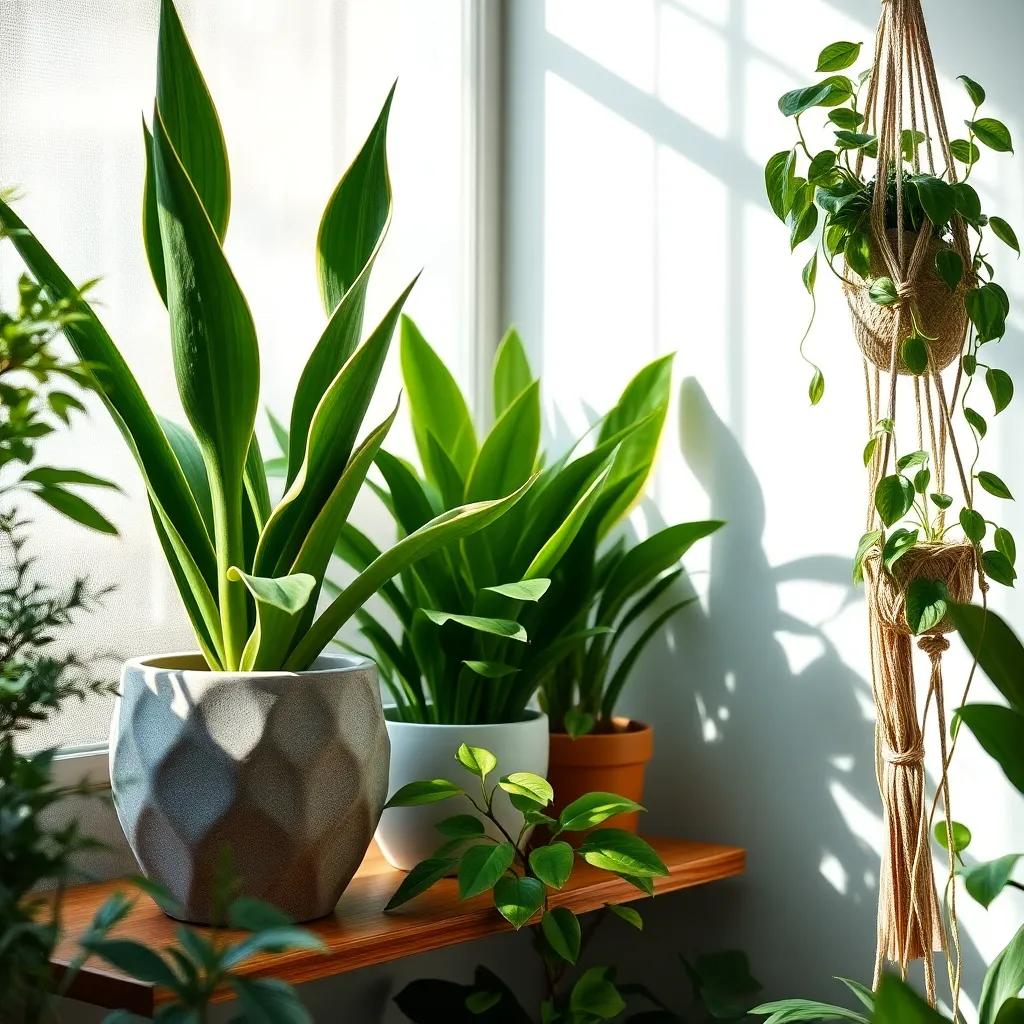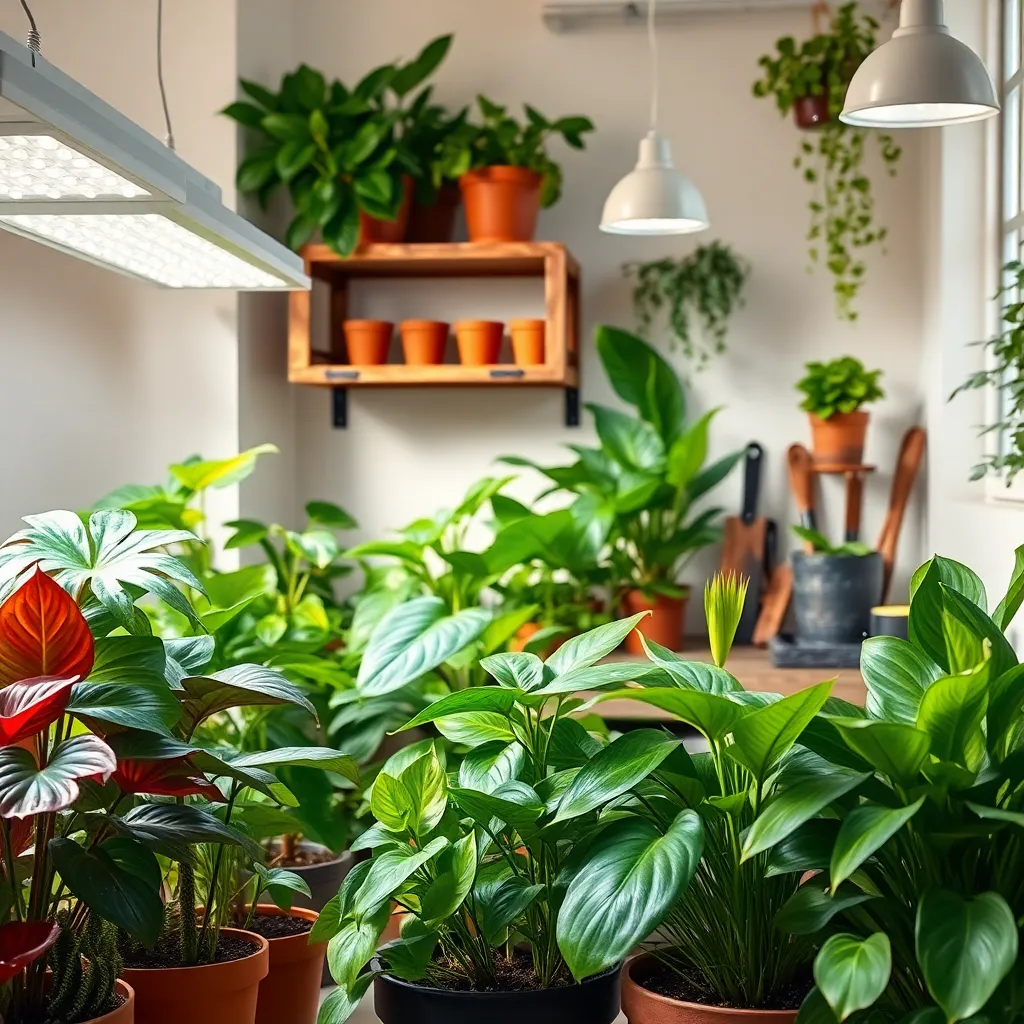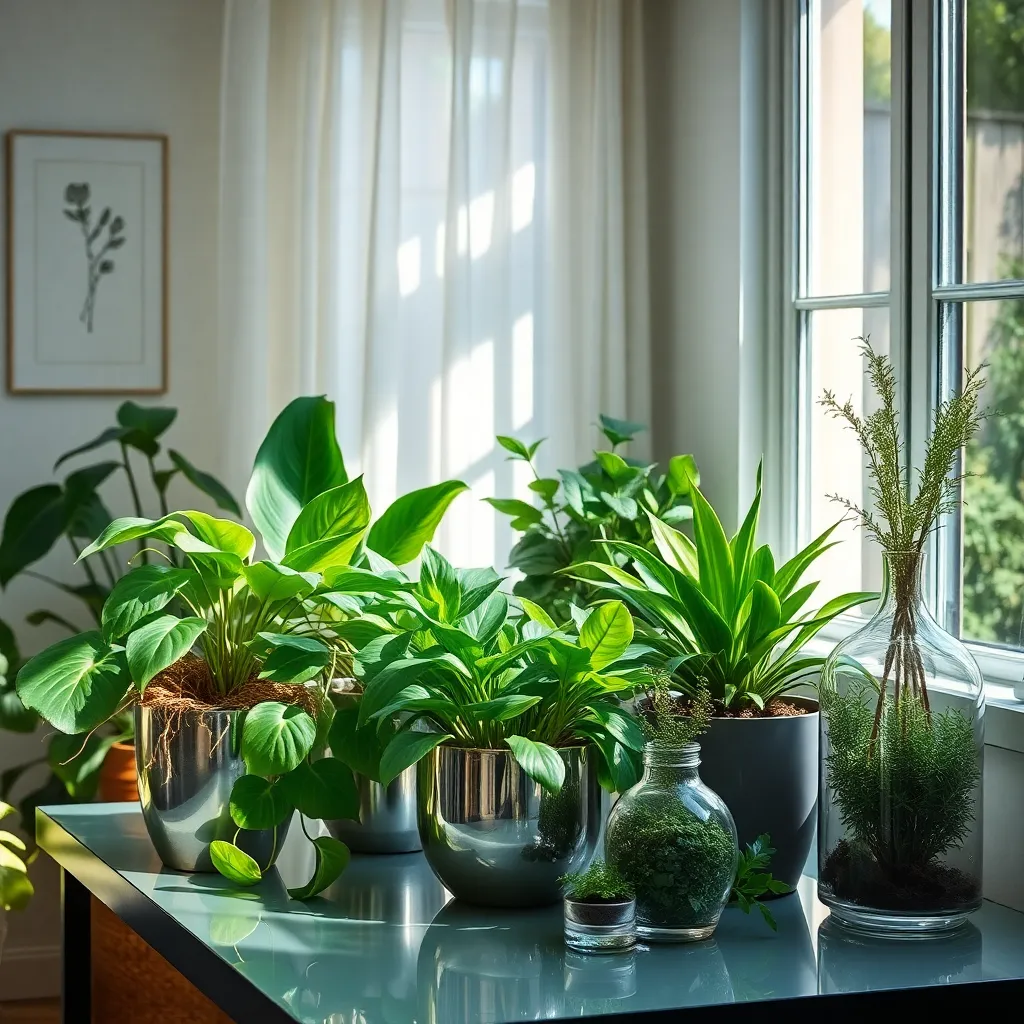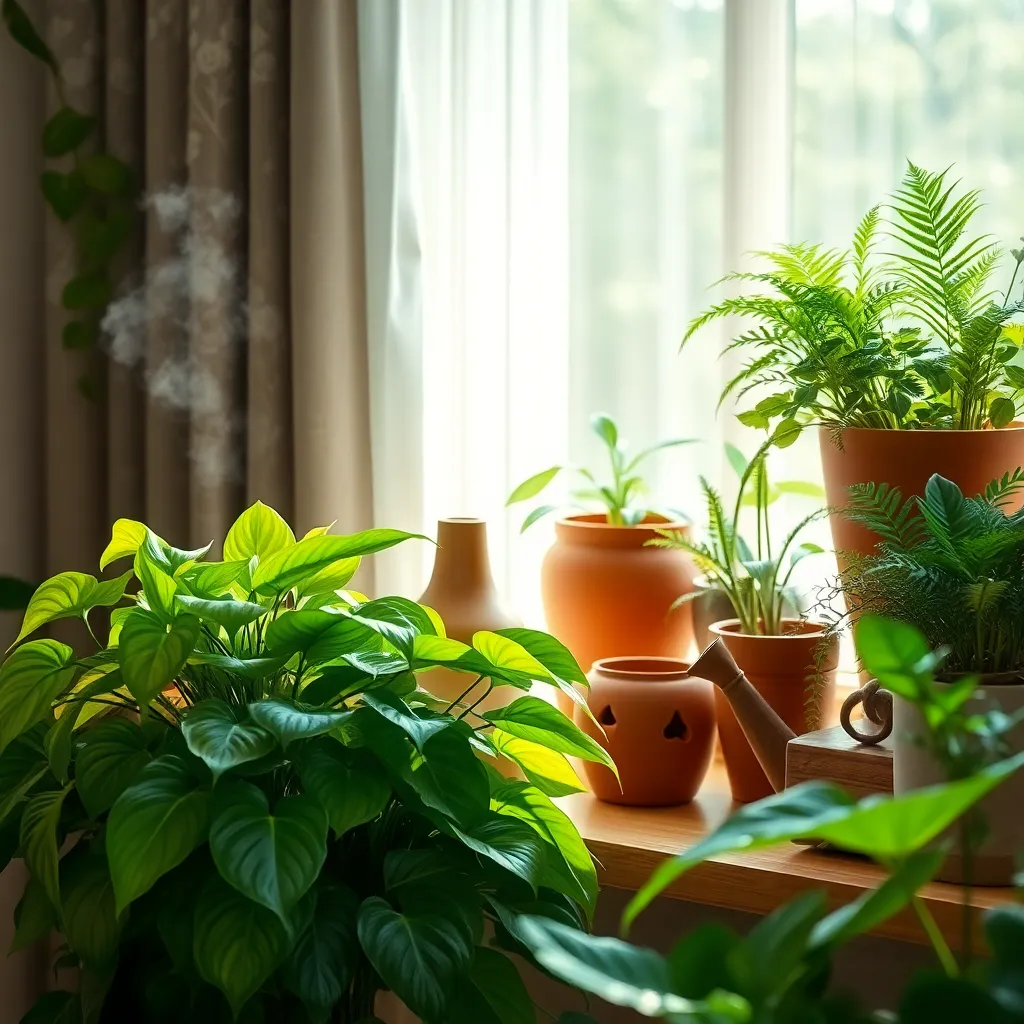In the quiet corners of your home, where sunlight seems elusive, a vibrant world of indoor plants can flourish. Whether you’re just embarking on your gardening journey or have years of experience under your belt, the prospect of cultivating greenery without natural sunlight can be both thrilling and puzzling. This guide is crafted to illuminate the path toward successfully growing plants in low-light settings, turning your home into a lush sanctuary where nature and modern living coexist harmoniously.
Indoor gardening without sunlight is not only possible but can be remarkably rewarding. With the right tools and techniques, you can nurture a variety of plants that will thrive in the dimmer parts of your living space. As you delve into this article, you’ll discover innovative solutions like grow lights and carefully chosen plant varieties that naturally adapt to shadier environments. We’ll explore how to create optimal conditions for your indoor garden, ensuring your plants receive the care they need to flourish and bring joy to your home.
For the novice gardener, this journey promises to demystify the process of indoor plant care, offering practical steps to overcome the challenges of limited sunlight. For the seasoned plant enthusiast, it’s an opportunity to expand your gardening repertoire and embrace new strategies to enhance your indoor oasis. By the end of this article, you’ll be equipped with the knowledge to transform any dimly lit corner into a thriving garden, proving that with a little creativity and care, any space can become a nurturing environment for your leafy companions.
Select Suitable Low-Light Plants

When selecting low-light plants, consider those that naturally thrive in dim environments. Snake plants, for instance, are exceptionally tolerant of low light and are renowned for their ability to purify the air.
Another excellent option is the ZZ plant, which can survive with minimal light and infrequent watering. These plants are perfect for beginners because they require little maintenance and are resilient to neglect.
For those looking to add some color, Chinese evergreens offer beautifully patterned leaves and do well in low-light conditions. It’s important to keep the soil slightly dry between waterings to avoid root rot, making them ideal for busy plant enthusiasts.
Ensure your low-light plants are potted in well-draining soil to prevent water from sitting at the roots. A mix of potting soil and perlite is often recommended to maintain the right balance of moisture and aeration.
Invest in Quality Grow Lights

Investing in quality grow lights is essential for growing indoor plants without access to natural sunlight. These lights provide the full spectrum of light that plants require for photosynthesis, allowing them to thrive indoors.
When choosing grow lights, consider the specific needs of your plants and the space where they will grow. LED grow lights are a popular choice due to their energy efficiency and long lifespan, making them a worthwhile investment.
Position your grow lights about 6-12 inches above the plants for optimal light exposure. Adjust the height based on plant growth and light intensity, ensuring the lights cover the entire plant canopy.
For beginners, a simple setup with a timer can ensure your plants receive consistent light. Aim for 12-16 hours of light per day, mimicking the natural daylight cycle to promote healthy growth.
Advanced gardeners might explore using different types of grow lights, such as fluorescent or HID, to cater to specific plant needs. Mixing different light spectrums can enhance flowering and fruiting phases in more demanding plants.
Regularly clean the surface of your grow lights to maintain their efficiency, as dust can reduce light output. This small maintenance step ensures that your plants receive the maximum benefit from your investment.
Use Reflective Surfaces Wisely

Using reflective surfaces can significantly enhance the light available to your indoor plants, mimicking the benefits of natural sunlight. By strategically placing mirrors or reflective foils around your plants, you can effectively amplify the light from grow lights, ensuring even distribution across the foliage.
Begin by positioning reflective surfaces on walls or adjacent to your plants where light is less intense. This approach can help reduce the shadows cast by larger leaves, allowing the entire plant to benefit from increased light exposure.
For beginners, try using everyday objects like aluminum foil or whiteboards, which can serve as excellent reflective materials. Simply wrap or position them around your plants, ensuring they face towards the light source to maximize reflection.
Advanced gardeners might experiment with Mylar sheets, known for their high reflectivity and durability. These sheets can be easily cut to size and placed around your grow area, offering a professional touch to your indoor garden setup without breaking the bank.
Maintain Optimal Humidity Levels

Maintaining optimal humidity levels is crucial for growing indoor plants without sunlight. Many indoor plants thrive in environments with humidity levels between 40% and 60%, so investing in a hygrometer can help you monitor these levels effectively.
Consider using a humidifier to boost moisture in the air, especially during dry seasons. This device is particularly beneficial for tropical plants like ferns and orchids that require consistently higher humidity levels to flourish.
Alternatively, you can create a humidity tray by placing a layer of pebbles in a shallow dish and filling it with water. As the water evaporates, it provides a gentle increase in humidity, which is ideal for plants like peace lilies and spider plants.
Grouping plants together is another effective method to raise humidity levels, as plants naturally release moisture through a process called transpiration. This microclimate can be especially beneficial for beginner gardeners who are looking for an easy way to maintain humidity without constant intervention.
Monitor and Adjust Watering Schedule

Monitoring and adjusting your watering schedule is crucial for growing indoor plants without sunlight. Without natural light, plants may require less frequent watering compared to those exposed to direct sunlight.
Begin by understanding the water needs of your specific plant species. Some plants, like succulents, need less water, while others, such as ferns, thrive in consistently moist soil.
Check the soil moisture level regularly by inserting your finger about an inch deep into the soil. If it feels dry, it’s time to water; if it’s still damp, wait a few days before the next watering.
Consider using a moisture meter for more precise readings, especially if you’re caring for multiple plant types. This tool can help you avoid overwatering, which is a common mistake among indoor gardeners.
Adjusting watering frequency is essential as environmental conditions change. During cooler months, plants may need less water, so reduce the frequency to prevent root rot.
Ensure proper drainage by using pots with drainage holes and well-draining soil mixes, such as a cactus or succulent mix for water-sensitive plants. This helps prevent water from pooling at the bottom, which can lead to root issues.
Conclusion: Growing Success with These Plants
As we’ve explored, nurturing relationships, much like growing indoor plants without sunlight, requires creativity and intentional care. First, we learned the importance of establishing a strong foundation through communication, akin to choosing the right soil. Next, we delved into maintaining consistency, much like providing regular watering schedules. Third, the significance of adaptability shone through as we discussed adjusting to each other’s needs, just as plants adapt to different light sources. Fourth, the role of trust was highlighted, mirroring the essential nutrients plants require for growth. Lastly, we emphasized the need for patience, reminiscent of the time it takes for plants to flourish.
To immediately put these insights into action, consider setting aside dedicated time this week to have an open conversation with your partner about your relationship needs and goals. This step will reinforce your relational foundation and foster growth.
Remember, healthy relationships are cultivated with intention and care. Save or bookmark this article to revisit these essential tips and continue nurturing your bond. As you implement these strategies, envision a future where your relationship thrives, rooted in understanding and mutual growth. Let’s embark on this journey together to cultivate a love that flourishes, even in the absence of sunlight.

